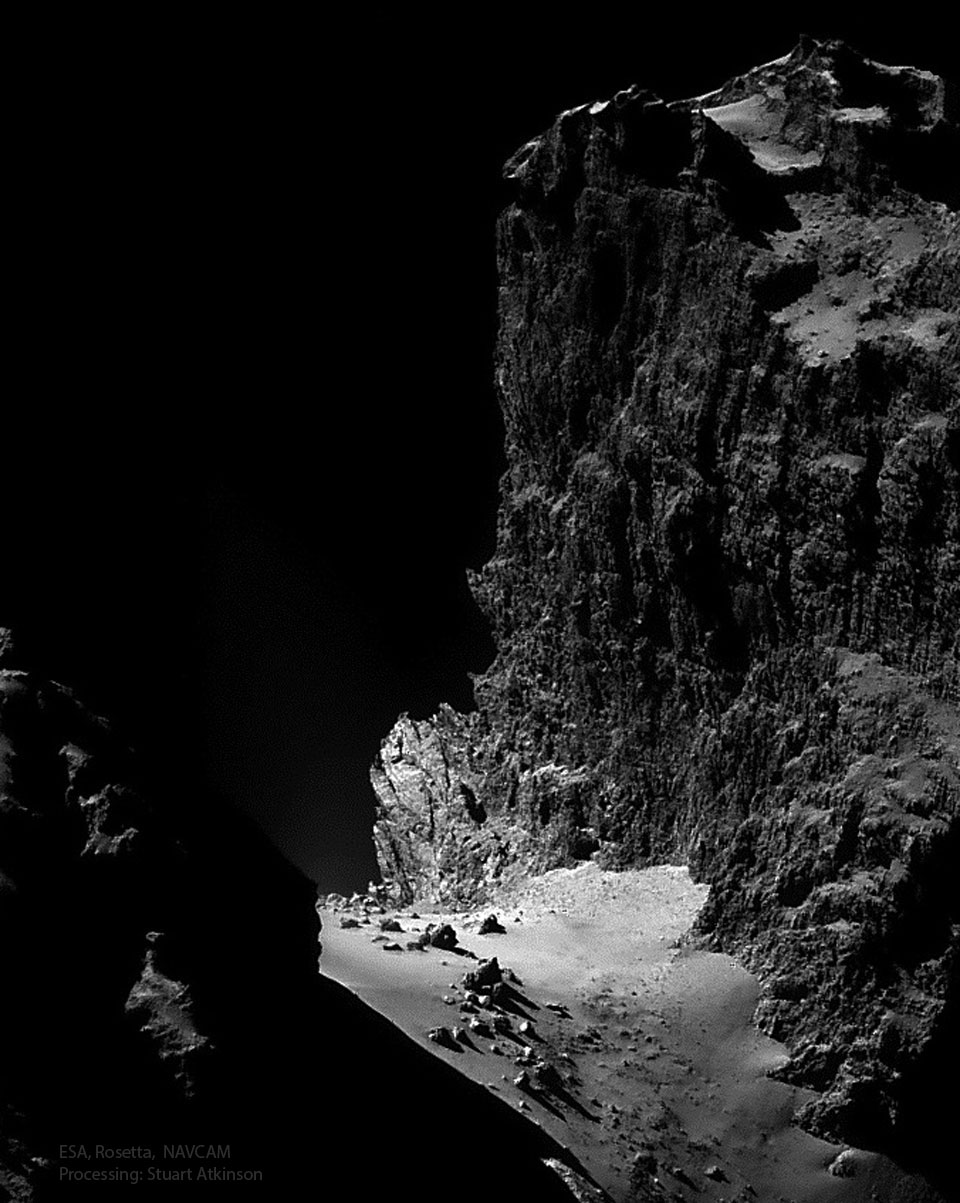丘留莫夫彗星上一公里高的懸崖 - 格拉西緬科
A Kilometer High Cliff on Comet Churyumov - Gerasimenko

發表日期:2024-12-16
這個千米高的懸崖出現在一顆彗星的表面。 它是由歐空局發射的 "羅塞塔 "號機器人飛船在丘留莫夫-格拉西緬科彗星(CG)的暗核上發現的。 羅塞塔號 "飛船在 2014 年至 2016 年期間對彗星進行了軌道巡視。"羅塞塔號 "飛船在執行任務的早期就拍攝到了這裡的鋸齒狀懸崖。雖然峭壁高約一公里,但CG 彗星表面重力較小,人類從峭壁上跳下很可能還能存活。 懸崖腳下是相對平緩的地形,其間點綴著直徑達 20 米的巨石。來自 "羅塞塔 "號的資料表明,CG 彗星中的冰與地球海洋中的水相比,氘的比例明顯不同,因此其來源也可能不同。 該探測器以 "羅塞塔石碑 "命名。"羅塞塔石碑 "是一塊石板,上面用三種不同的語言書寫著相同的文字,幫助人類破譯了古埃及文字。
原文:This kilometer high cliff occurs on the surface of a comet. It was discovered on the dark nucleus of Comet Churyumov - Gerasimenko (CG) by Rosetta, a robotic spacecraft launched by ESA, which orbited the comet from 2014 to 2016. The ragged cliff, as featured here, was imaged by Rosetta early in its mission. Although towering about one kilometer high, the low surface gravity of Comet CG would likely make a jump from the cliffs by a human survivable. At the foot of the cliffs is relatively smooth terrain dotted with boulders as large as 20 meters across. Data from Rosetta indicates that the ice in Comet CG has a significantly different deuterium fraction -- and hence likely a different origin -- than the water in Earth's oceans. The probe was named after the Rosetta Stone, a rock slab featuring the same text written in three different languages that helped humanity decipher ancient Egyptian writing.
※ 本文由萌芽機器人自動轉貼自每日一天文圖(Astronomy Picture of the Day,APOD),原文為英文,正體中文是透過 DeepL 翻譯及 OpenCC 進行自動處理,內容僅供參考,若有任何錯誤之處還請見諒!
關於每日一天文圖:每日一天文圖網站是美國國家航空暨太空總署與密西根理工大學提供的服務,網站每天提供一張影像或圖片,並由天文學家撰寫扼要說明其特別之處。